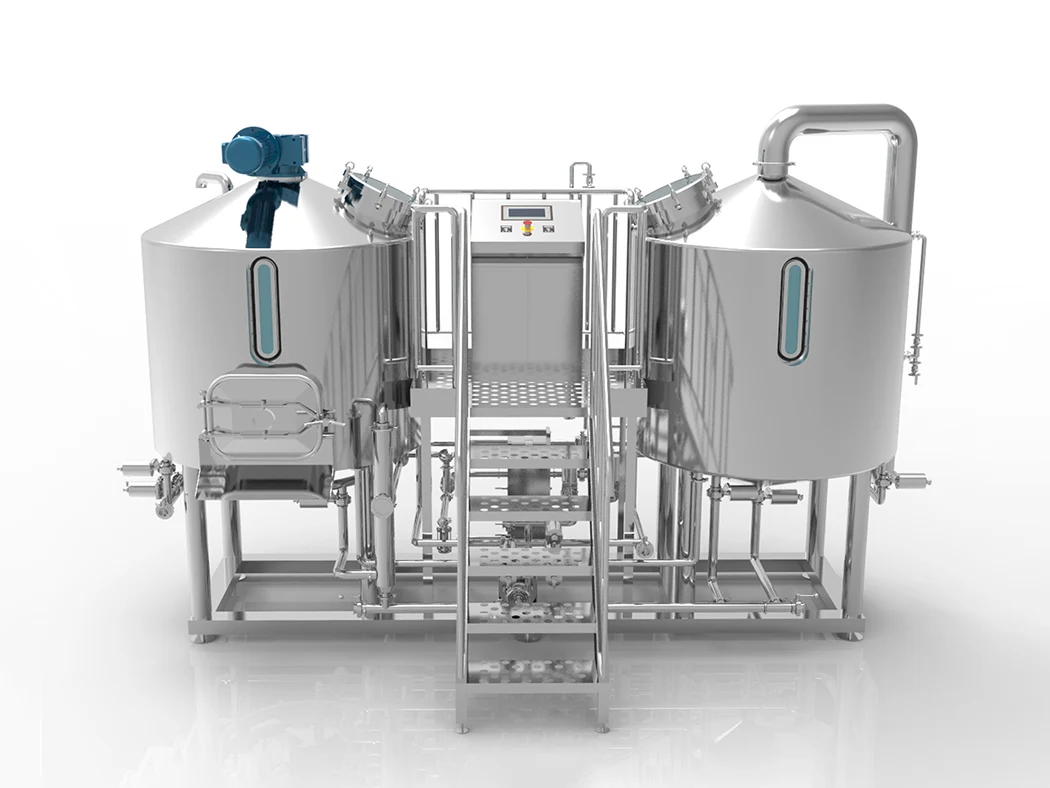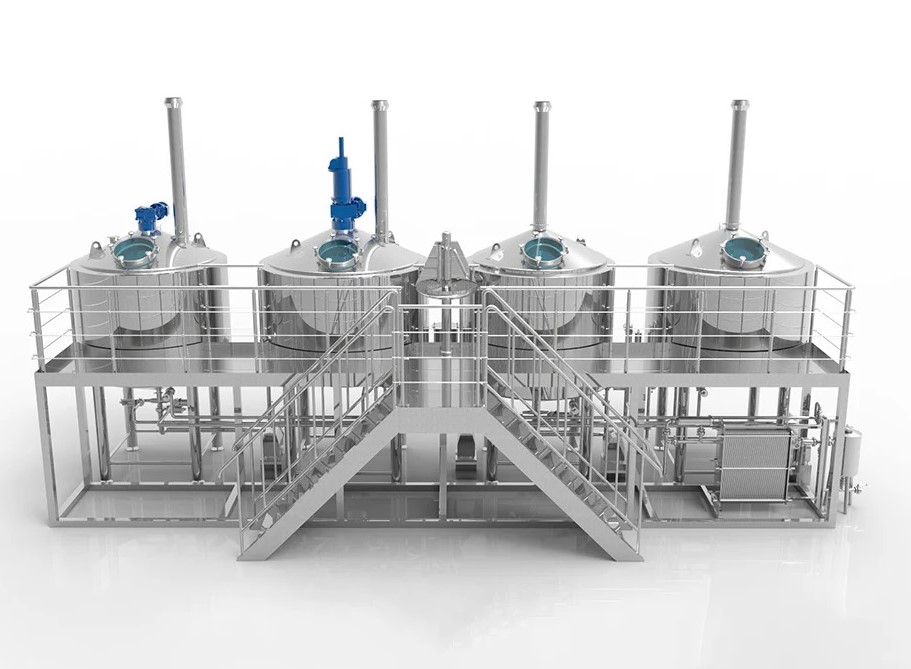Space is tight, funds are thinner, and regulations feel confusing. That mix stalls momentum, wastes effort, and puts flavor at risk. Use this field-tested roadmap to pick the right kit, plan the room, and pour with confidence.
Nano brewery equipment means compact vessels, controls, and utilities sized for tiny production. It covers the brewhouse, tanks, chilling, cleaning, and packaging so you can make beer in small batches with reliable control and repeatability.
As an fabricante de equipamentos in the indústria cervejeira, we build compact lines for new teams and seasoned operators alike. Our focus is simple: help you start brewing on a small-scale system that can grow, support safe operations, and protect beer quality from day one.
What is a nanobrewery, and who is it for?
A nano-cervejaria is a tiny cervejaria that produces beer in small batches, often measured in 1bbl runs. It bridges homebrewing to professional brewing by giving aspiring brewers a clean, safe, and repeatable processo de fabrico de cerveja at a fraction of the cost while staying compliant for selling beer in a taproom.
These little shops serve the brewing community: homebrewers refining beer recipes, startup teams testing market fit, and chefs and bar owners who want ultra-fresh pints. Compared with larger plants, the equipment used is lean and mobile, yet rugged enough for the daily knocks of fabrico comercial de cerveja.
“Start simple, learn fast, and build habits that scale.” — Advice we give every new owner.
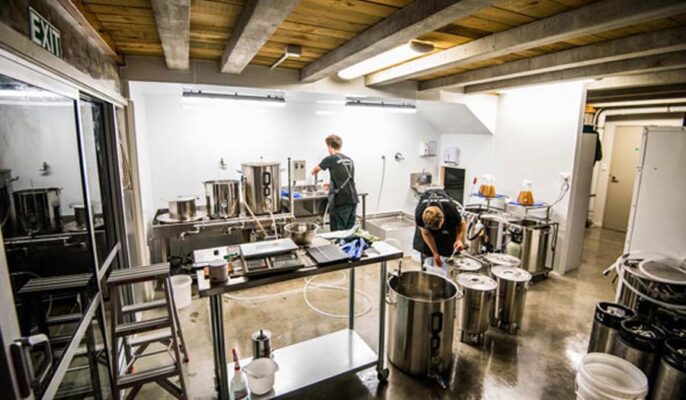
What equipment is required for a nano brewhouse?
At minimum you need a two-vessel cervejaria com um chaleira and a mash/lauter combo, cubas de fermentação, a tanque brite, a glycol loop with a refrigerador, controls, and CIP tools. That core set of equipamento para cervejarias e equipamento de fabrico de cerveja forms a professional-grade brewing system when the details are right—valves that seal, probes that read correctly, and hoses that don’t kink.
Right-sizing matters. Choose tri-clamp fittings, plan headspace in each tanque, and match utilities to your lote plan. A well-drawn P&ID makes ops clearer for the cervejeiro, reduces mistakes, and keeps the room safe for guests.
At a glance (core kit):
- Two-vessel cervejaria (mash/lauter + chaleira/whirlpool)
- Tanques de fermentação (conical, PRV, carb port)
- Tanque brilhante (sight glass, carb stone, racking arm)
- Glycol refrigerador & manifold, insulated lines
- Control panel (temp & pump control)
- CIP cart (pump, hoses, spray ball)
- Básico packaging equipment (keg couplers or tabletop canner)
How do fermentation tanks and the brite tank affect beer quality?
Fermentação control is the heartbeat. Conicals simplify yeast cropping and keep sediment out of transfers. With a casaco e glycol cooling, the fermentador holds target temperatures, preventing off-flavors and allowing precise timing for dry hopping and conditioning.
After conditioning, a tanque brite clarifies and carbonates the beer before service. Clean racking arms, stones, and gauges—supported by reliable CIP—help the pint sparkle, hold foam, and protect flavor stability. The tight, sanitary path from hot side to brite is what preserves head retention and aroma.
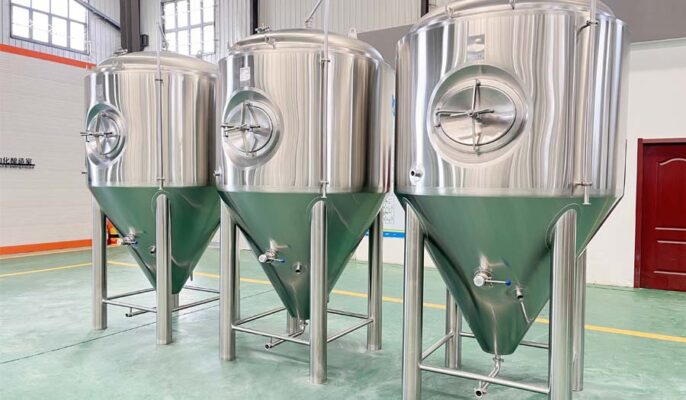
How big should each batch be: 1bbl, 3 barrels, or a double batch?
Tamanho do lote is a balance of demand, cold-box space, and cash. A 1bbl run keeps inventory light while you experiment with hop varieties and styles. Brewing 3 barrels once demand is steady increases margins and smooths scheduling.
Think about brew length, vessel losses, and staffing. A double batch into a larger tanque can cover a busy weekend. Plan transfers so one fermentador can condition while a tanque brite is carbonating the next release.
Quick comparison (estimates)
| Option | Approx. finished liters per run | Prós | Considerações |
| 1bbl | ~117 L | Low risk; great for R&D and rotating styles | More brew sessions, more cleaning |
| 3 barrels | ~352 L | Better margins; steadier flow for a small taproom | Requires more cold storage and cash tied in inventory |
Chart: monthly output vs brew length
Assumes 8 runs/month and standard process losses.
Utilities: glycol, chiller capacity, and jacketed vessels explained
Quiet utilities make quality possible. Size the glycol reservoir and the refrigerador to handle the worst case: one vessel crashing, two at fermentação setpoint, and a brite on gas. Insulate lines and use proper valves so flows are easy to direct and temps stay flat.
A jacketed chaleira stabilizes step rests and speeds cooling after the boil. If steam isn’t in play, electric elements and gentle agitation still keep mosto moving and minimize hot spots for the cervejeiro.
CIP and sanitation: the quiet key to consistent wort and beer
A disciplined CIP routine reduces risk and labor. Use a dedicated pump and spray ball per tanque, follow caustic with acid, rinse, then sanitize. Validate occasionally with ATP swabs so you know your stainless is truly clean.
Label quick connects, match gaskets to chemicals, and document the sequence. That habit is how small teams lock in consistency from lote para lote—and why your pints taste the same every time.
From homebrewing to a taproom: layout, licensing, and a cost effective way to start small
Move from fabricação caseira to a compact cervejaria by planning your room first. Keep the cervejaria near the grain area, leave aisles around fermentação rows, and stage packaging equipment by the cold box. Think about drains, make-up air, and power before buying equipamento para fabrico de cerveja.
A cost effective way para start small is a two-vessel kit with two cubas de fermentação and one tanque brite. That gives you steady rotation while you learn. Involve the brewing community early to share notes on permits, taxes, and the timeline for startup costs.
Pro tip: Most owners sketch the floor twice—once for day-one and once for the next two tanks—so trench lines, outlets, and hose runs are “future-proof.”
A realistic brew day: mashing process to packaging equipment
On dia da cerveja, heat strike water, begin the mashing process, and circulate until conversion. Lauter, boil in the chaleira, and chill the mosto to pitching temperature. Set glycol targets and let fermentação work while you track gravity and sensory checks.
Finish by moving bright beer into a barril or cans. For brewing beer that travels well, keep cold-chain, seams, and DO low. Even boil kettles benefit from good vents and pressure relief to keep the team safe.
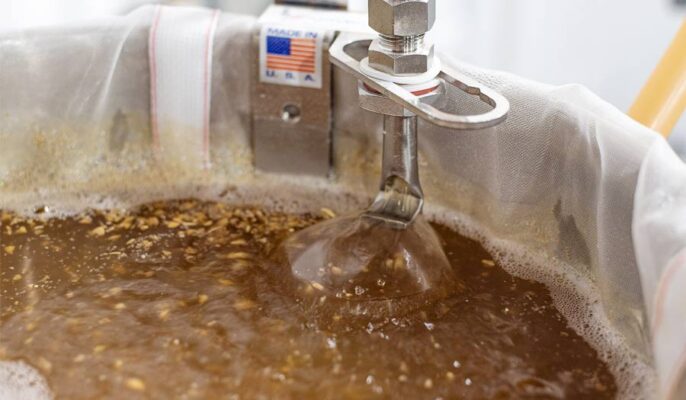
Scaling up: turning nanos into a viable business that goes beyond just brewing
“Nanos” grow by dialing in three core styles, measuring demand, and scaling only what sells. Scaling can be more tanques or longer production days, eventually stepping toward full-scale nanobrewery production as demand rises.
Remember the guest. A cervejaria thrives by hospitality beyond just brewing—service, story, and clean glassware. With steady habits, the small shop becomes a viable business and a trusted local brand.
How an equipment manufacturer and equipment supplier supports your journey
As an fabricante de equipamentos, we design turnkey lines that fit the room, drains, and codes, and we also offer a pilot brewing system for recipe work and pilot brewing. Many manufacturers offer utilities skids, crush stations, and load cells so compact teams can run like pros.
As your fornecedor de equipamentos, we help specify add-ons—an extra tanque, a canner, or a refrigerador—and we service the gear. Equipamento profissional de fabrico de cerveja should be modular, so your sistema de fabrico de cerveja evolves with demand and your team’s brewing experience grows.
Case study: tiny room, big results
Room: 60 m² production with a small service bar
Kit: Two-vessel cervejaria, two cubas de fermentação, one tanque brite, compact glycol skid
Process: Rotate flagships; use trials for seasonal cerveja artesanal
Results after month 6
- Average sell-through: 85% of a run in 12 days
- Waste: cut by 20% through better CIP and hose management
- Revenue: +30% after adding a second fermentador
“We proved demand with 1bbl runs, then added capacity in month five. Same footprint, more throughput.”
Sample nano layout (text-only)
- Hot side: mill → mash/lauter → chaleira/whirlpool (heat source: electric)
- Cold side: heat-exchanger → fermentação row → tanque brite by cold-box door
- Utilidades: glycol manifold above the tanks; drains in straight lines; GFCI for pumps
- QA: simple hydrometer & pH meter; DO checks at package
- Admin: labeler shelf, COAs binder, SOP folder
FAQs
What batch should I start with—1bbl or 3 barrels?
Start with the volume you can sell in two weeks. 1bbl keeps risk low; 3 barrels improves margin once you have reliable taps.
Can nano gear be used at home?
Some compact skids can be used at home for pilots, but check local codes before selling beer.
Preciso de um reservatório de água salgada separado?
If your fermentador can carb and serve, you might skip it. A dedicated tanque brite speeds turns and helps clarity.
How long does a typical lauter and boil take?
It varies by system, but expect 45–75 minutes to lauter and 60–90 minutes to boil in the chaleira depending on the recipe.
Is nano a path to bigger production?
Yes. Many owners start small, prove demand, and then plan scaling—extra tanques, more cold storage, or a move to a larger site.
Can nano systems make consistent craft beer?
Absolutely—when temp control, cleaning, and transfers are tight. That’s why fermentação control and CIP are non-negotiable.
Sources & further reading
- Brewers Association – Starting a Brewery
- TTB – Brewer’s Notice
- Master Brewers Association – Technical Resources
Key takeaways
- Match lote to demand; don’t let inventory outrun cold storage.
- Protect beer quality with clean transfers, tight fermentação control, and smart CIP.
- Right-size glycol, refrigerador, and power. Plan drains and hose runs before installation.
- Use the cervejaria to learn quickly; then add tanques methodically as sales prove out.
- Work with an fabricante de equipamentos and trusted partners for drawings, training, and support—so the system grows with you.
Note for readers: This guide focuses on practical selection and operations for nano teams—from cerveja caseira roots to a small public room. It’s meant to lower risk, speed learning, and help you choose gear that fits your goals today and tomorrow.

